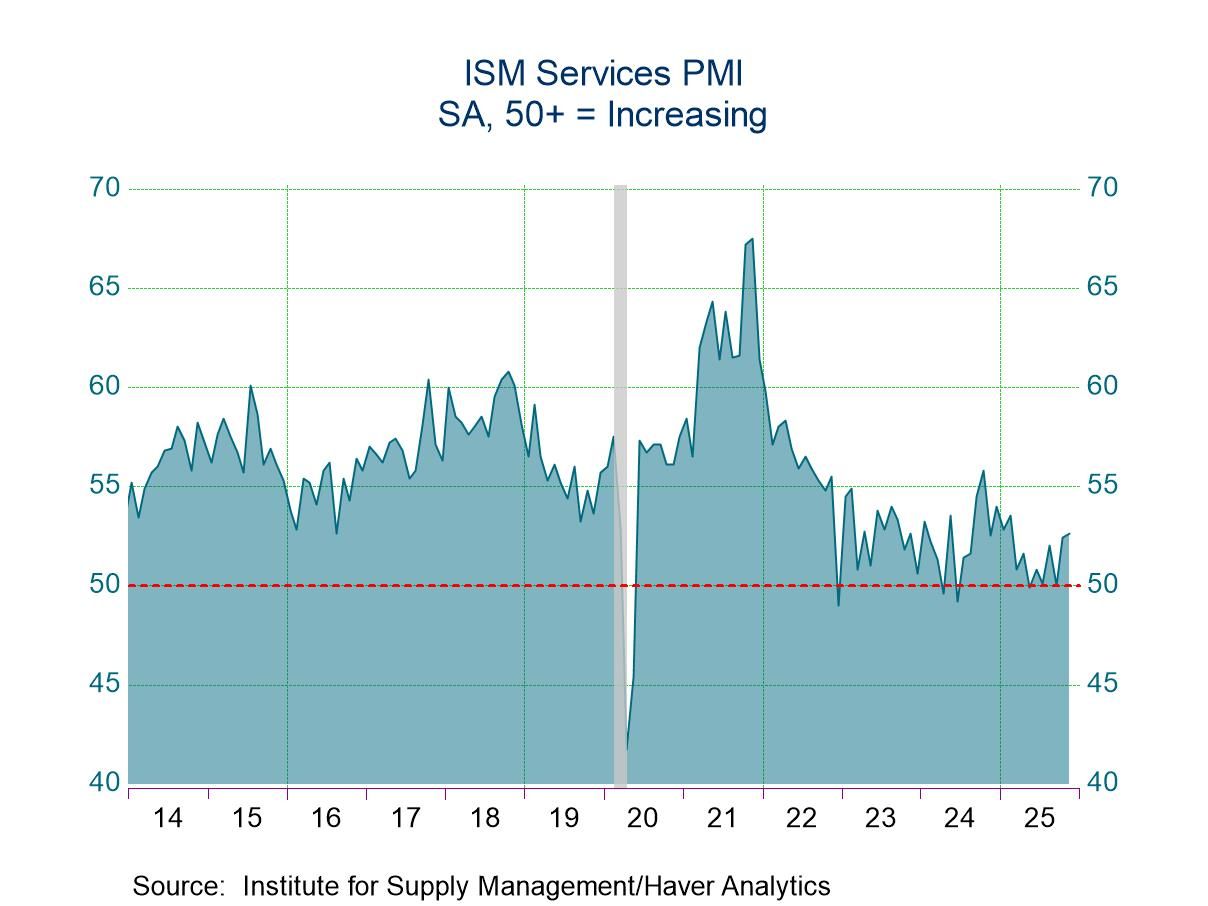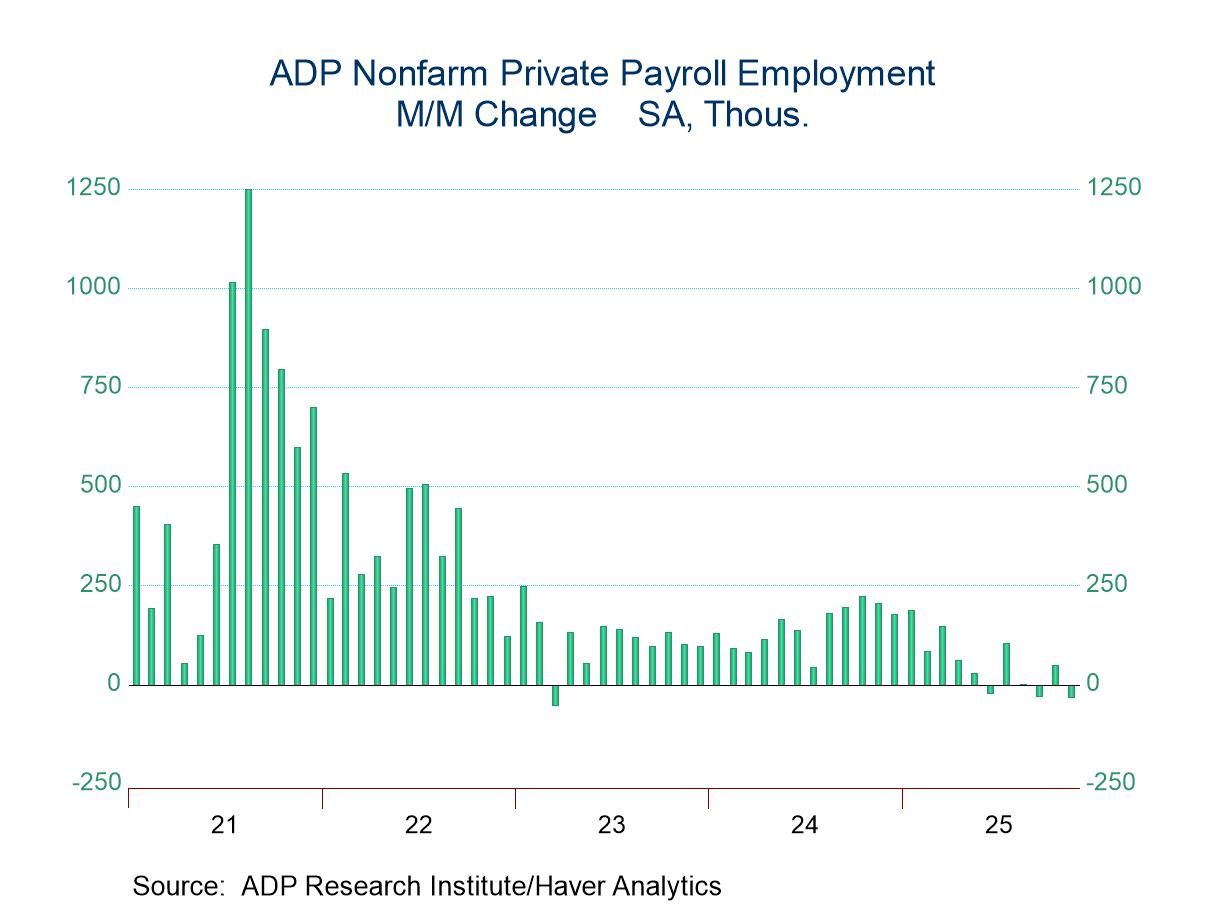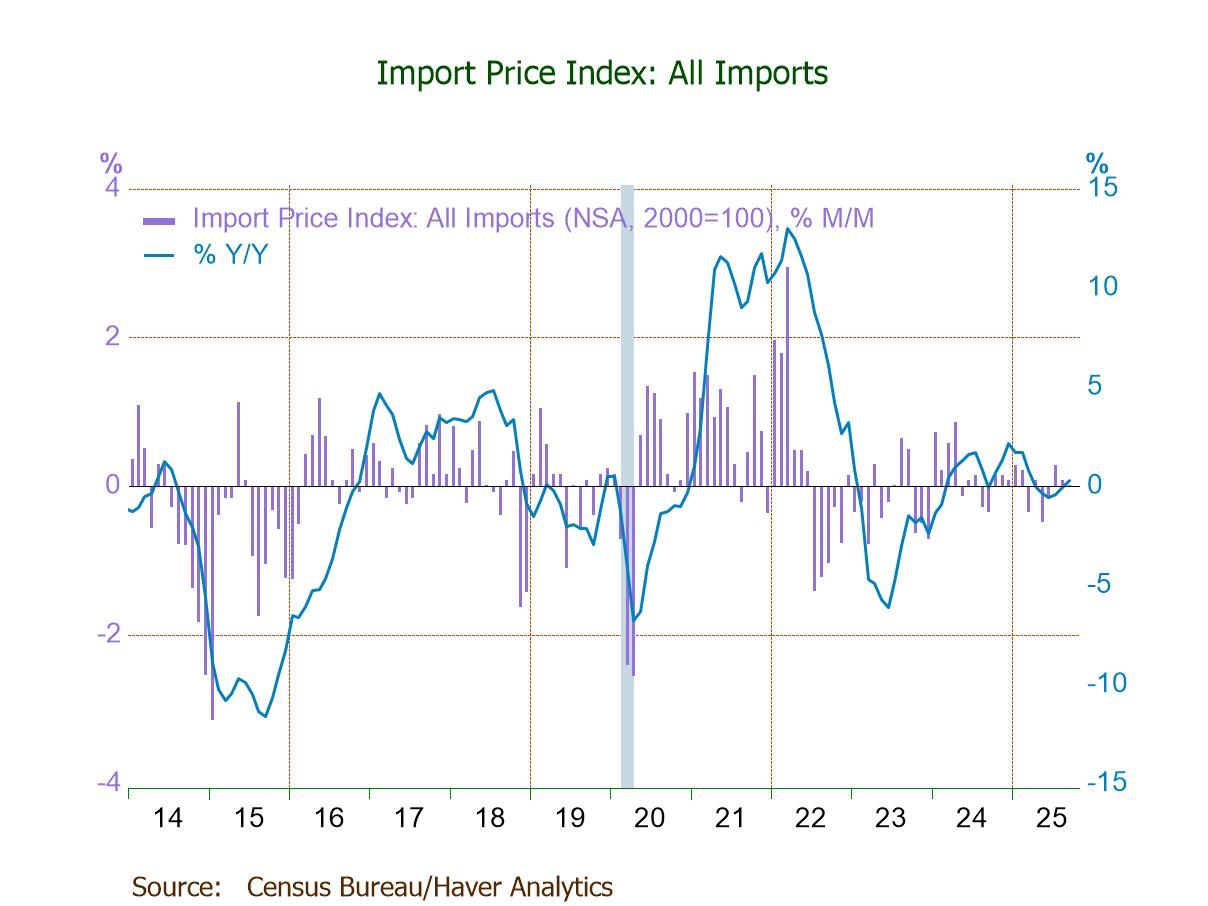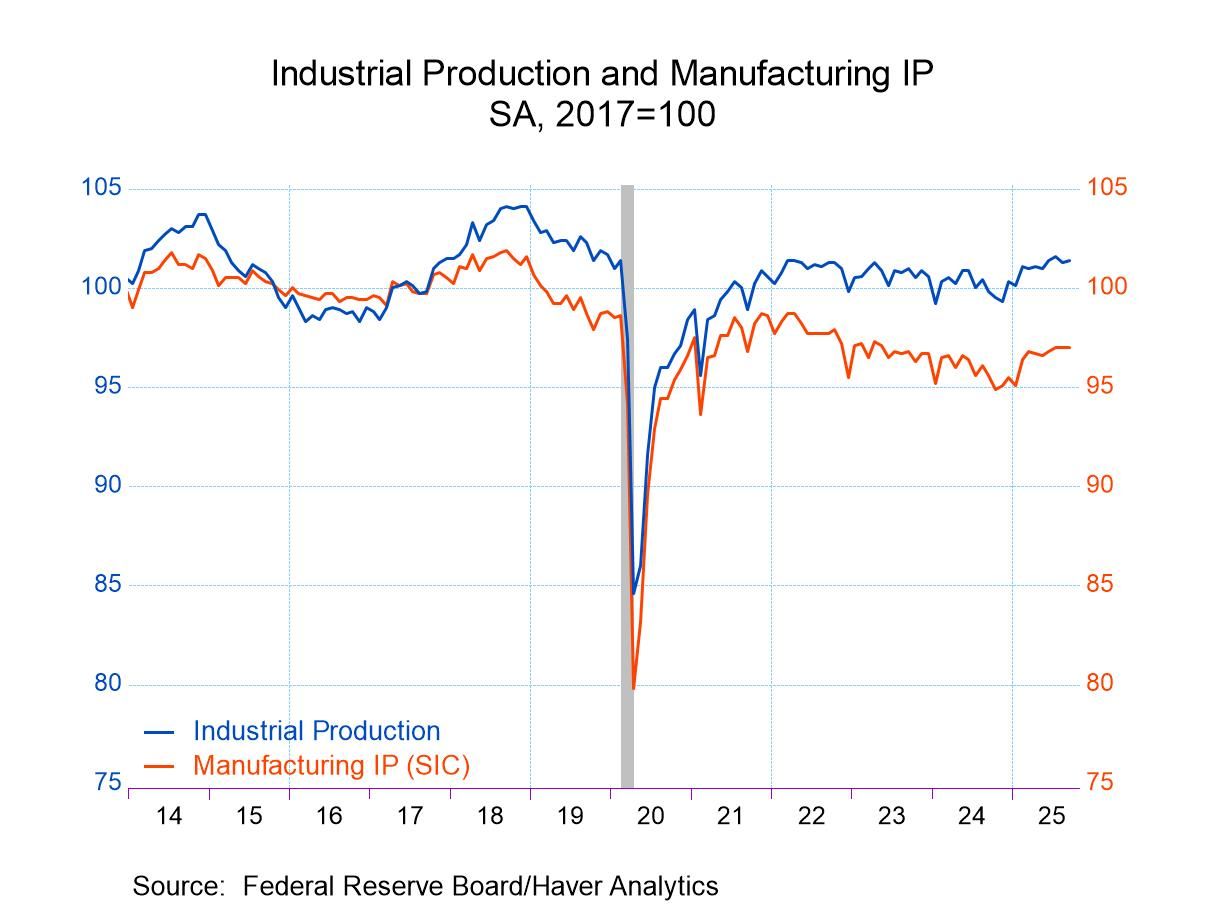FRB Kansas City Manufacturing Index Unchanged in August
by:Sandy Batten
|in:Economy in Brief
Summary
- Index remained (though barely) in positive territory for the second consecutive month, indicating that manufacturing activity was inching up.
- Prior to last month, the index had been negative for 22 consecutive months.
- Positive readings across most key components.
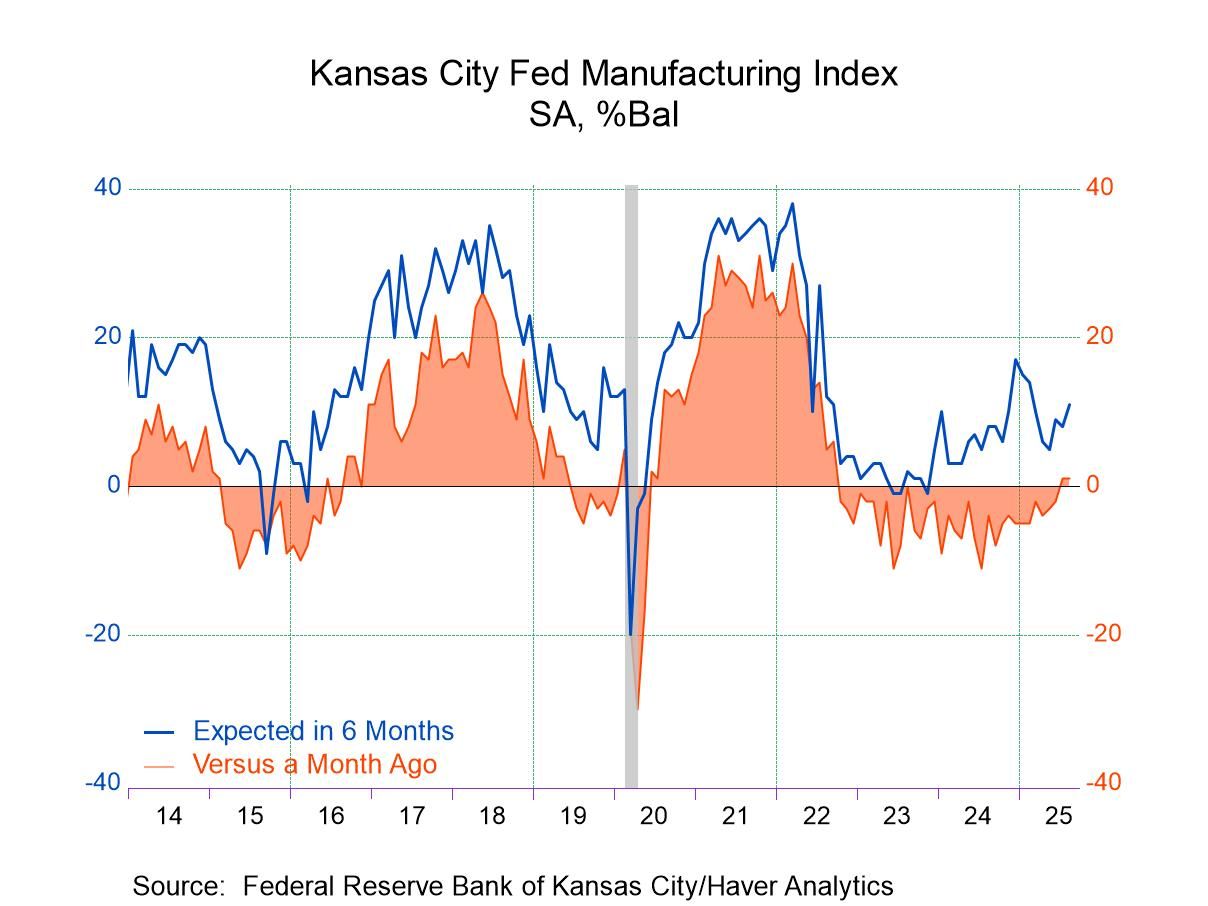
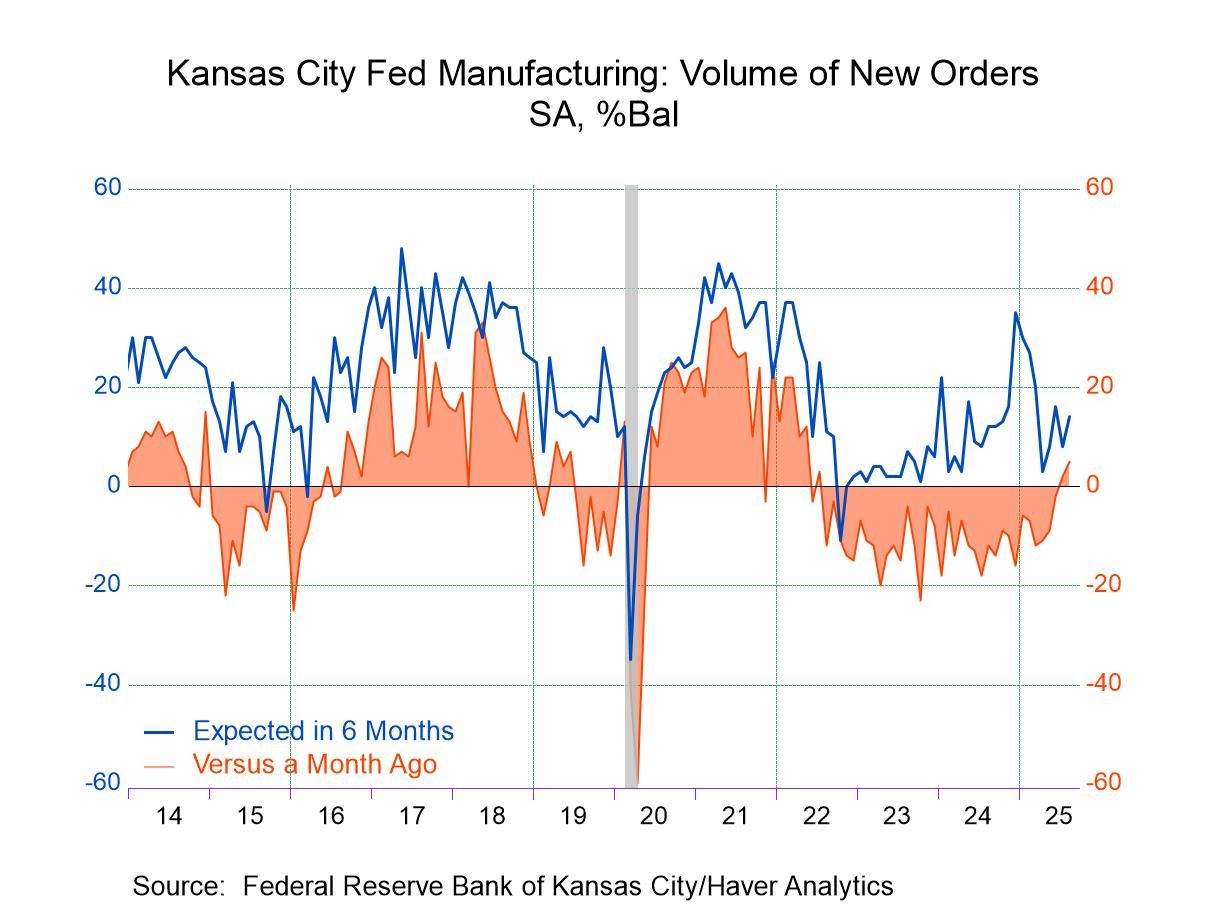
The Kansas City Fed manufacturing composite index was unchanged at 1 in August from July. This was the second consecutive month that the index has been positive, indicating the manufacturing in the KC Fed district continue to inch up in August. Prior to the positive reading in July, the index had been negative for 22 consecutive months. The index’s most recent high was 31 reached in both April 2021 and October 2021. The durable manufacturing sector was mostly flat in August, while nondurable manufacturing activity declined slightly driven by printing activities and paper and chemical manufacturing.
The August survey was open for a six-day period from August 20-25, 2025 and included 103 responses from plants in Colorado, Kansas, Nebraska, Oklahoma, Wyoming, northern New Mexico, and western Missouri.
The ISM-adjusted index calculated by Haver Analytics rose to 51.1 (NSA) in August from 50.2 in July. This was the fifth reading above the critical 50 level that separates expansion from contraction in the past six months, a further indication of expanding manufacturing activity.
For the major component indexes, the production index was 0 in August, but this was up from -3 in July. The new orders index rose to 5 in August, its highest reading since May 2022, from 2 in July. The shipments index increased to 6 in August from 3 in July. The employment index was 0 in August, but this was up from -11 in July. Also, the average workweek index rebounded to 3 in August after having been in negative territory for the previous four months. Supplier delivery times were unchanged at 7 in August. The elevation of this index since April may indicate some incipient supply-chain disruptions from higher tariffs. In contrast, raw materials inventories fell to -7 in August from 8 in July.
On the inflation front, the prices paid for raw materials index remained elevated but fell to 43 in August from 47 in July and a local high of 51 in June. Forty-four percent of respondents reported an increase in raw materials prices in August, down from 48% in July and 53% in June, while only 4% reported a decrease, down from 5% in July and 6% in June. The prices received for finished products index increased to 21 in August from 18 in July. This index has fluctuated in a range between 17 and 21 for the past four months.
Expectations for future activity remained positive, with the composite index rising to 11 from 8, as firms anticipate an improvement in production and new orders. While expectations have been trending up over the past several months, they remain depressed relative to the recent high reading of 17 last December. Capital expenditures expectations remained in negative territory in August for the second consecutive month but edged up to -3 from -4 in July.
The series dates back to July 2001. The diffusion indexes are calculated as the percentage of total respondents reporting increases minus the percentage reporting declines. The composite index is an average of the production, new orders, employment, supplier delivery time, and raw materials inventory indexes. Data for the Kansas City Fed Survey can be found in Haver’s SURVEYS database.
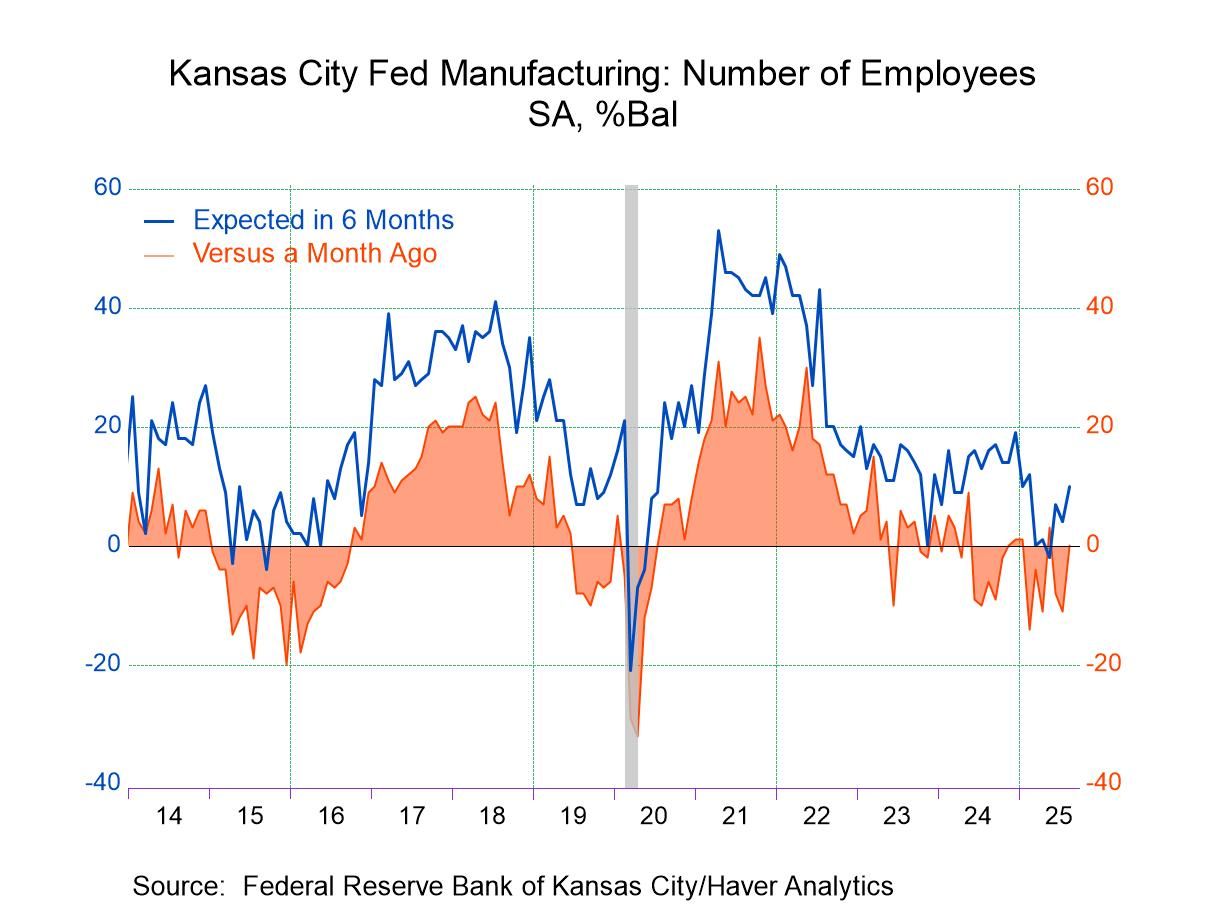
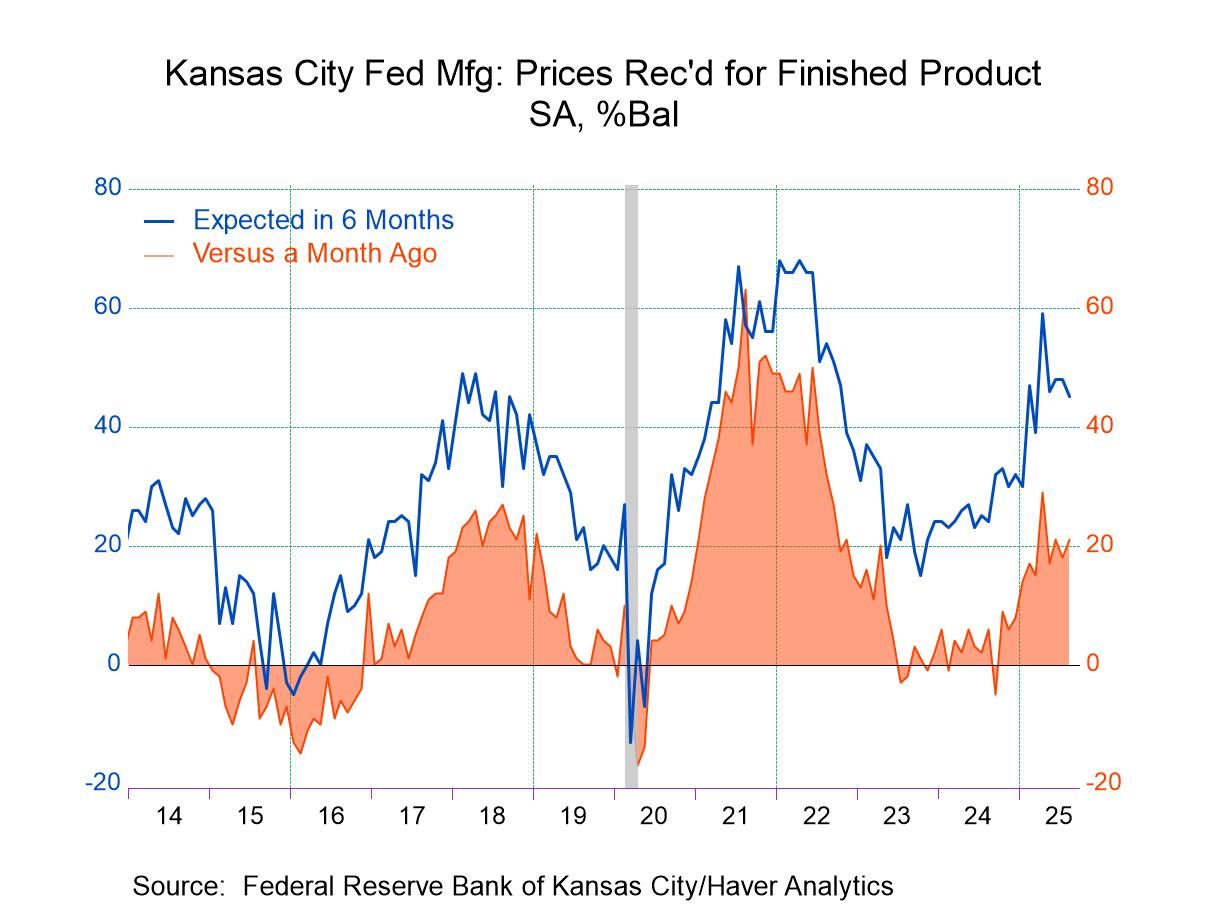
Sandy Batten
AuthorMore in Author Profile »Sandy Batten has more than 30 years of experience analyzing industrial economies and financial markets and a wide range of experience across the financial services sector, government, and academia. Before joining Haver Analytics, Sandy was a Vice President and Senior Economist at Citibank; Senior Credit Market Analyst at CDC Investment Management, Managing Director at Bear Stearns, and Executive Director at JPMorgan. In 2008, Sandy was named the most accurate US forecaster by the National Association for Business Economics. He is a member of the New York Forecasters Club, NABE, and the American Economic Association. Prior to his time in the financial services sector, Sandy was a Research Officer at the Federal Reserve Bank of St. Louis, Senior Staff Economist on the President’s Council of Economic Advisors, Deputy Assistant Secretary for Economic Policy at the US Treasury, and Economist at the International Monetary Fund. Sandy has taught economics at St. Louis University, Denison University, and Muskingun College. He has published numerous peer-reviewed articles in a wide range of academic publications. He has a B.A. in economics from the University of Richmond and a M.A. and Ph.D. in economics from The Ohio State University.



